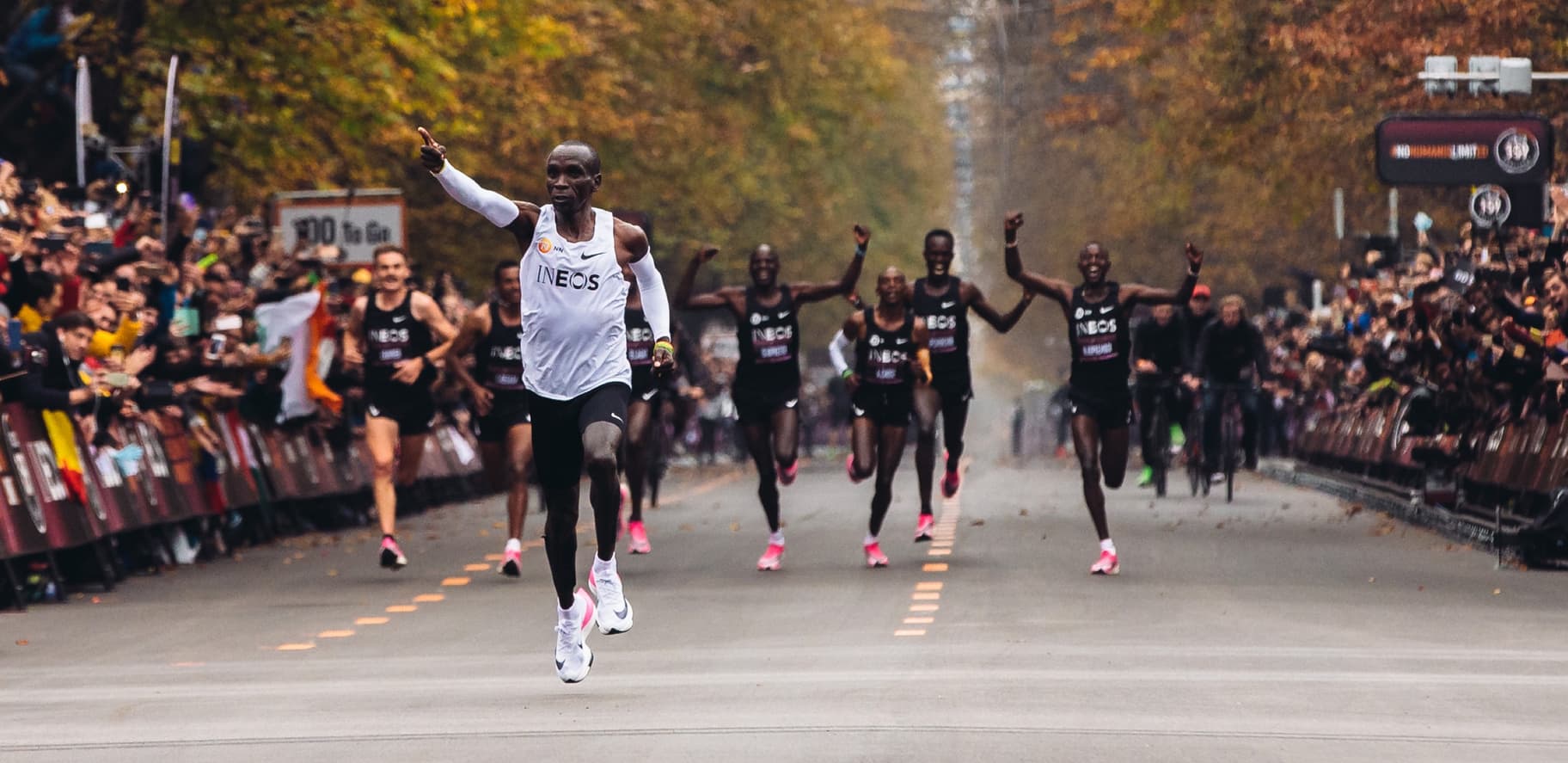
Beyond Limits
Eliud Kipchoge's dream to break the two-hour marathon barrier once seemed crazy, but with a 1:59:40 finish on 12 October 2019, he proved that if you are relentless in pursuing a goal, anything is possible.
Eliud's 2019 success had been years in the making. In his teens and early 20s, he was a five-time World Champion at the 5,000m. In 2012, he switched to road running and subsequently became a four-time London marathon winner and the Olympic marathon champion in 2016.
In 2017, he teamed up with Nike for his first sub-two-hour attempt that was chronicled in the documentary Breaking2. Eliud missed his mark by 26 seconds that day, but that attempt and everything he learned from it helped Eliud realise his dream of running a marathon in under two hours two years later.
Scroll to learn more about the science, the shoe and the people who helped him become the fastest marathoner in history.
Breaking2: The Documentary
In 2016, Nike teamed up with National Geographic to document our quest to break the two-hour barrier. On 6 May 2017, Eliud, Lelisa Desisa and Zersenay Tadese attempted to break the two-hour marathon barrier. At this attempt in Monza, Italy, Eliud ran the fastest marathon in history at two hours and 25 seconds. Watch the film above to learn how science and innovation played an integral role in making history.

The Shoe
The shoe that started a revolution: The Nike ZoomX Vaporfly 4% was the groundbreaking shoe that Eliud and his pacers wore for his first Breaking2 attempt. From the initial idea and throughout development, the Nike Sport Research Lab closely collaborated with Eliud and other testers to help identify the exact specifications necessary for each runner to perform at peak efficiency. But the innovation hasn't stopped there. The next-generation shoe, the Nike ZoomX Vaporfly Next%, has even better energy return than the 4%, and has helped countless runners achieve personal bests and elite marathoners stand on race-day podiums.

The Preparation
In order to achieve success on race day, we obsessed over every detail, no matter how small. Nike Sport Research Lab scientists worked with the athletes months in advance to help refine their diet and hydration strategies and spent months finding the optimal setting for the race, ultimately choosing the temperate climate of northern Italy. Most notably, we used a dynamic formation with pacers to reduce wind drag for our athletes. Breaking2 wasn't just a race or an experiment—it is a model for how much faster we can go when cutting-edge science meets unwavering passion and commitment to the goal. After years of research and development, Breaking2 debuted a system of groundbreaking innovation that has the potential to elevate every runner.

Run with Eliud
In the Nike Run Club App, you can track your runs, set goals, measure your progress and celebrate success. You can also share your journey with a community of runners, compare challenges, and cheer each other on.